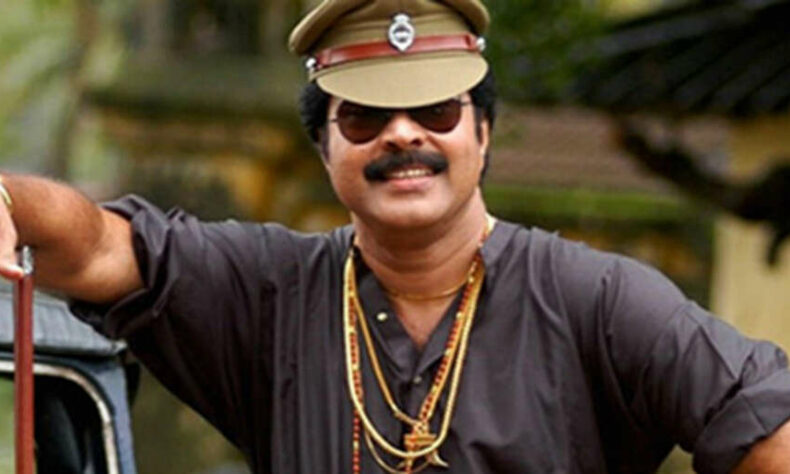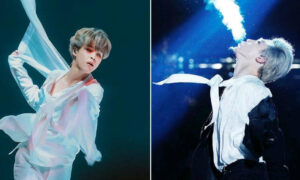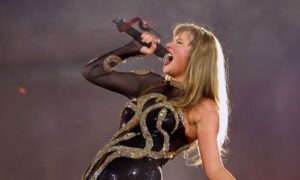
In the early 1980s, humour wasn’t his natural ground. Films such as Nanayam (1983), Veendum Chalikkunna Chakram (1984) and Nandi Veendum Varika (1986) gave him moments to play lighter shades, but they felt tentative. The actor still carried the weight of his dramatic persona, and the humour didn’t land with ease. These were not failures as much as experiments, lessons in timing and tone. What he discovered was that comedy, for him, couldn’t be pasted onto a performance; it had to be born from character.
The breakthrough came with Manu Uncle (1988). Cast in a children’s film, Mammootty stripped away intensity and tapped into warmth. As the genial guardian, he didn’t “perform” comedy. He simply allowed his natural charm and playfulness to shine, and the result was delightful. For countless children of that era, it was their first glimpse of a softer, more approachable Mammootty. It proved he could be funny by being himself.
A year later, Carnivel (1989) offered another shift. Set against the backdrop of a fairground, the film gave him space to play with lightness while keeping the core of the story intact. He wasn’t yet in full comic bloom, but the breezy touches showed he was growing more confident in mixing humour with storytelling.
Consider Kottayam Kunjachan (1990), where Mammootty played a small-time rowdy trying to turn over a new leaf. The film is a classic today not just for its storyline, but for how Mammootty infused the character with rustic wit and biting humour. His command over the Kottayam dialect, the way he delivered sharp one-liners, and the swagger that oscillated between menace and mischief turned Kunjachan into one of Malayalam cinema’s most memorable comic creations. The comedy wasn’t about flamboyance, but about timing, tone, and language and it worked brilliantly.
The next landmark was Rajamanikyam (2005). As Bellary Raja, Mammootty reinvented himself, adopting a theatrical Trivandrum dialect and larger-than-life mannerisms. What could have been ridiculous instead became riveting, because he committed fully. It was humour anchored in conviction, and it turned the film into a blockbuster while cementing Raja as one of his most iconic characters.
If Rajamanikyam was flamboyant, Mayavi (2007) was sly. Playing Mahi, a jailbird who doubles as a vigilante, Mammootty pulled back, letting restraint do the work. His sly smiles, perfectly timed pauses and understated coolness allowed the surrounding chaos to sparkle. The comedy was ensemble-driven, but it was his measured presence that held it together. The film went on to become the highest-grossing Malayalam release of that year.
He carried this playful energy into Pokkiri Raja (2010), where he shared the screen with Prithviraj in a film that thrived on mass appeal and exaggerated humour. As Raja, Mammootty embraced larger-than-life swagger, delivering punchlines with a mix of menace and wit. The film’s comic tone, especially in the banter between the leads, made it a runaway hit and reaffirmed his ability to dominate mainstream comedy just as he does drama.
One of his most acclaimed comic turns came the same year with Pranchiyettan and the Saint (2010). As Pranchi, the Thrissur businessman desperate for validation, Mammootty brought both humour and poignancy. His Thrissur dialect, his mannerisms, and his earnest yet bumbling pursuit of social acceptance struck a delicate balance between satire and sympathy. It is often cited as one of his finest performances, a reminder that great comedy can hold a mirror to society.
Sprinkled across the decades are other gems. Chronic Bachelor (2003) showcased his knack for sarcasm, where exasperation itself became funny. Thuruppu Gulan (2006) turned his swagger into punchlines, his machismo played with a wink. Pothan Vava (2006) let him revel in verbal sparring, wielding repartee with ease. These weren’t mere diversions; they were reminders that Mammootty’s humour was as varied as his dramatic range.
More recently, he has leaned towards subtlety. In Immanuel (2013), gentle humour softened the edges of a middle-aged man navigating indignities at work. Unda (2019) gave us a weary police officer caught unprepared, with comedy that came from vulnerability rather than gags. Even in the shadowed corridors of Bheeshma Parvam (2022), a sly smile or a quick line showed flashes of playfulness beneath the gravitas.
What ties all these performances together is sincerity. Mammootty never uses comedy as garnish. He digs into the character, letting humour arise naturally from their quirks, flaws or circumstances. That is why his comedic turns endure. When Kunjachan swaggers, when Mahi smirks, when Bellary Raja blusters, when Pranchi stumbles, when Raja struts, it feels authentic. We’re not watching an actor “try” comedy; we’re watching a character live it.
It also explains why his comic performances feel like events. Mohanlal is often celebrated for a natural ease with humour, but Mammootty’s comedy thrives on surprise. We expect thunder, and suddenly there’s laughter. The contrast itself becomes the joke, and the audience relishes it.
Underlying this is his confidence in stardom. Many actors guard their image carefully, unwilling to risk looking silly. Mammootty has never hesitated to poke fun at himself, to exaggerate, to embrace absurdity when it serves the story. That willingness keeps him fresh and unpredictable, even after decades at the top.
So on his birthday, it’s worth raising a toast not only to the commanding performer who has anchored some of Malayalam cinema’s greatest dramas, but also to the man who, when he chooses, lets go of the thunder and shows us the joy beneath. Because when Mammootty makes us laugh, cinema itself feels lighter, brighter and endlessly more fun.
Also Read: International Web Series To Watch That Became An Instant Hit Ever Since It’s Release
This article first appeared on Filmfare
📰 Crime Today News is proudly sponsored by DRYFRUIT & CO – A Brand by eFabby Global LLC
Design & Developed by Yes Mom Hosting






